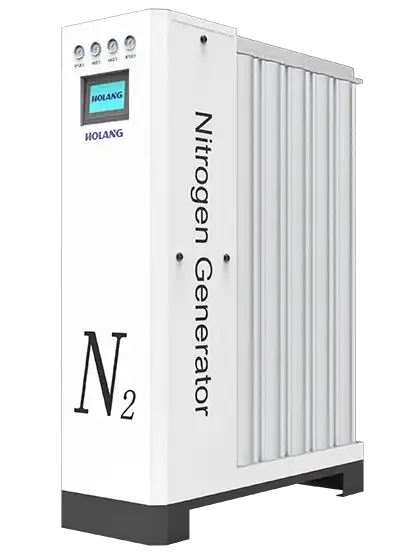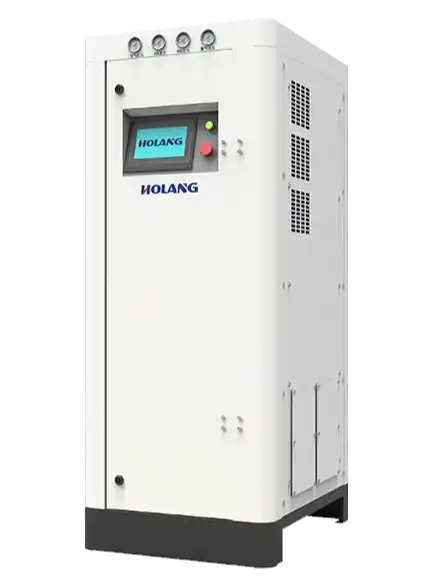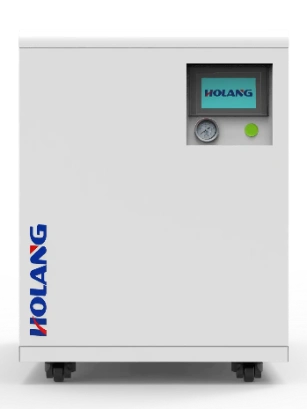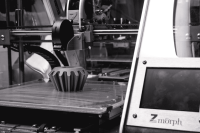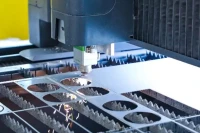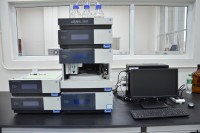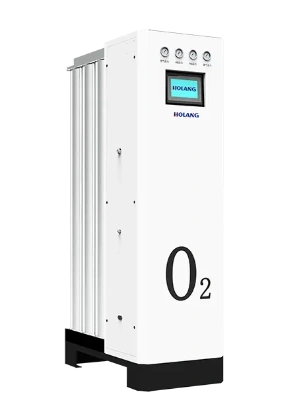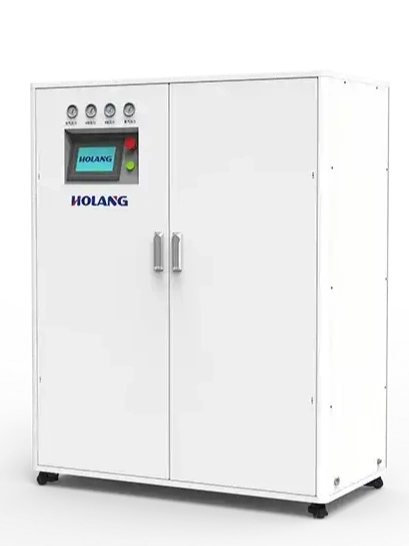In a wide range of industries—from oil and gas to food processing—nitrogen generators are increasingly favored over traditional nitrogen cylinders for their efficiency, flexibility, and cost savings.
As on-site nitrogen generation becomes more common, component-level advancements are quietly reshaping the capabilities of modern gas systems.
This article offers a technical, objective look at how flow rate optimization, purity levels, and system design are evolving, and what that means for engineering teams planning their next upgrade.
Why Component-Level Innovation Matters
While nitrogen generators come in many shapes and sizes, nearly all rely on the same fundamental process: separating nitrogen from compressed ambient air.
This separation process, usually achieved through PSA (Pressure Swing Adsorption) or membrane technology, depends heavily on the components inside the system—particularly those that affect:
-
Nitrogen purity levels
-
Flow rate control
-
Operational costs
-
Long-term efficiency
-
Gas quality stability
In 2025, the focus is less about “which model” and more about “how well the parts work together” to deliver consistent gas generation performance under variable conditions.
Key Component Developments Driving 2025
1. Adsorption Materials (CMS): Microstructure, Macro Impact
In PSA nitrogen generators, carbon molecular sieves (CMS) are used to adsorb oxygen and carbon dioxide from compressed air, allowing nitrogen to pass through.
Upgrades in CMS materials are helping systems achieve:
-
Higher nitrogen purities (up to 99.999%)
-
Faster cycle times and shorter regeneration periods
-
Longer material lifespan with reduced powdering
-
Improved selectivity, especially in environments with fluctuating humidity or high CO₂ levels
These improvements directly support site nitrogen generation systems that require both high flow rates and low operational downtime.
2. Filtration and Moisture Removal: No Room for Compromise
A nitrogen generator’s performance hinges on the quality of its input air, and that means having a robust, multi-stage filtration system.
Most advanced systems now include:
-
Pre-filters for dust and debris
-
Coalescing filters to remove oil aerosols from the air compressor feed
-
Activated carbon elements to remove VOCs
-
Desiccant or membrane dryers to reduce moisture content
In industries like oil and gas, where uptime and gas purity are critical, the efficiency of these filtration stages can significantly impact total system performance.
3. Control Systems: Smarter Means Leaner
Control panels have evolved from basic PLCs to fully integrated, touch-screen HMIs with advanced diagnostics.
Key features trending in 2025 include:
-
Remote access and monitoring via web portals
-
Real-time purity level and flow rate tracking
-
System auto-tuning based on current demand
-
Predictive maintenance alerts
This type of intelligence not only improves operational efficiency, but also helps reduce operational costs by preventing gas waste and unscheduled downtime.
Energy Efficiency and Flow Optimization
One of the most important cost drivers in nitrogen generation is energy usage, particularly from the air compressor.
As manufacturers face pressure to meet energy targets and reduce total lifecycle cost, systems are being redesigned to:
-
Use variable-speed air compressors that match demand in real time
-
Reduce internal pressure drop across filters and valves
-
Enable low-pressure PSA operation, especially for applications not requiring ultra-high purities
-
Recover heat from compression stages for facility heating or pre-warming incoming air
Modern nitrogen generators are now systems designed not just to produce gas—but to do it with minimal energy per unit of nitrogen delivered.
Flow Rate & Purity Balance: A Key Design Consideration
Every nitrogen application requires a different combination of flow rate and purity level.
For example:
-
Electronics manufacturing may require 99.999% purity at low flow
-
Laser cutting might need high flow rates at 95–99% purity
-
Food packaging lines often prioritize continuous flow over ultra-high purity
In 2025, system designers are focusing more on fine-tuning components to specific application ranges, rather than one-size-fits-all solutions.
That means:
-
Adjustable tower sizes
-
Selectable CMS grades
-
Smart flow valves that throttle delivery without waste
Modular Design and Flexibility
Flexibility is a key factor for companies transitioning from nitrogen cylinders to on-site nitrogen generation.
Today’s systems increasingly use:
-
Modular tower arrays that can scale with demand
-
Standardized filters and valves for easy part replacement
-
Swappable control modules for plug-and-play upgrades
-
Skid-mounted units for mobile or temporary deployment
This modular approach reduces not just installation time but also downtime and service complexity in the long run.
Moving Away from Cylinders: Cost Savings and Control
Replacing nitrogen cylinders with on-site systems offers advantages beyond just cost.
| Factor | Cylinders | On-Site Nitrogen Generation |
|---|---|---|
| Cost per m³ | High and volatile | Stable and lower over time |
| Delivery delays | Common | None |
| Pressure fluctuation | Often occurs | Stable output |
| Purity levels | Fixed by supplier | Fully adjustable |
| Safety | Manual handling risks | Fully enclosed, low risk |
For industries with a wide range of use cases, especially in remote areas or with variable production schedules, the switch is now seen as a long-term strategic decision rather than a short-term cost move.
What's Next: A Systems Perspective
In the future, success won’t come from individual component breakthroughs—but from how well the entire nitrogen system integrates and adapts.
Expect next-generation systems to offer:
-
Intelligent separation processes that optimize for both gas purity and flow rate
-
Real-time feedback loops between sensors and flow valves
-
Predictive diagnostics for CMS replacement and filter saturation
-
Adaptive energy management across compressors, dryers, and valves
This is not just about better parts—it’s about better systems thinking.
Final Thoughts
As we look toward 2025, it’s clear that nitrogen generator technology is becoming more mature, modular, and application-specific.
The biggest advances won’t be flashy. They’ll be found in:
-
How CMS is packed to maximize purity
-
How filtration units signal they need replacement
-
How a compressor runs only as much as it needs to
-
How software prevents waste before it starts
For engineers, plant managers, and energy planners, it’s a good time to revisit not just which system you choose—but how the components inside are evolving to match your operational goals.
